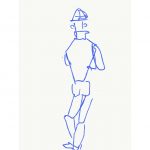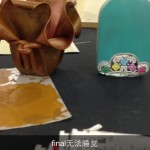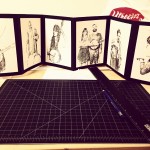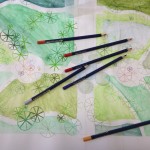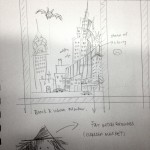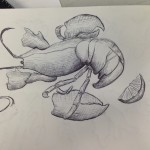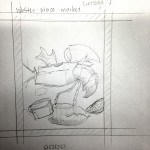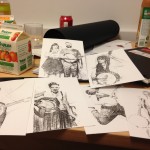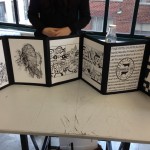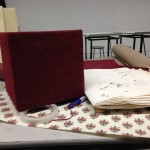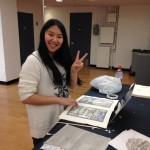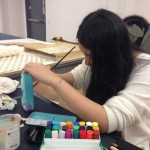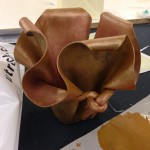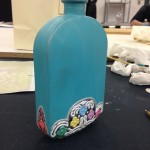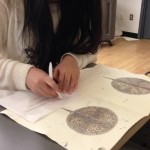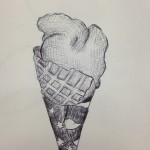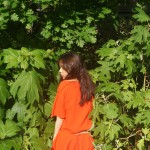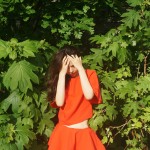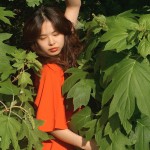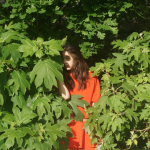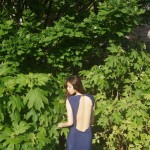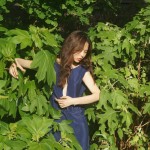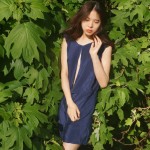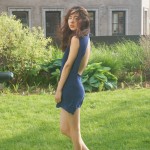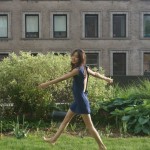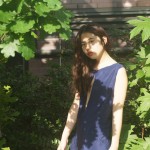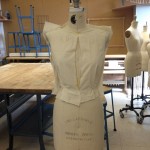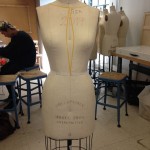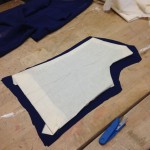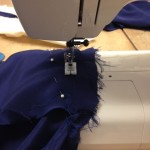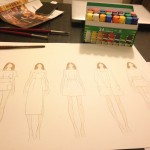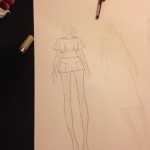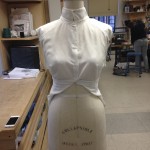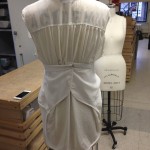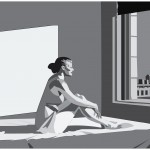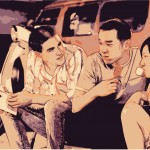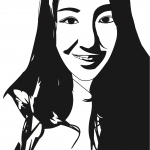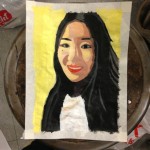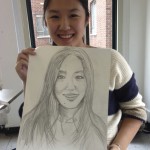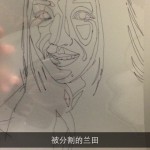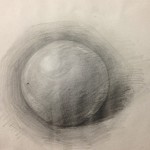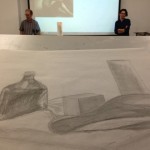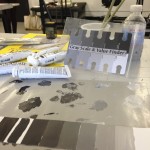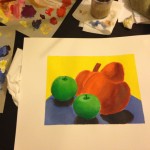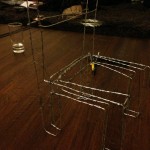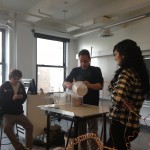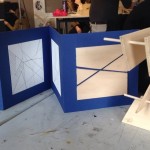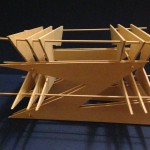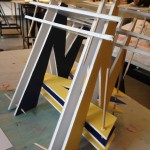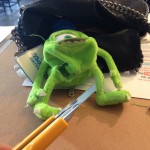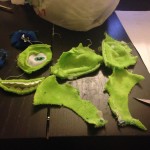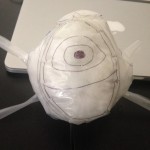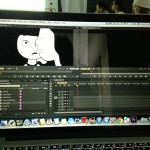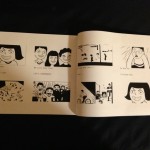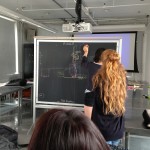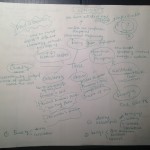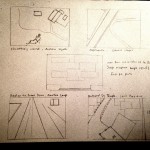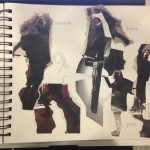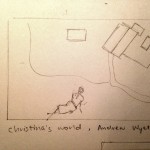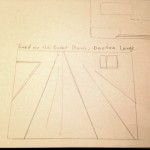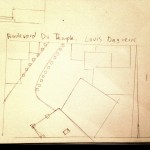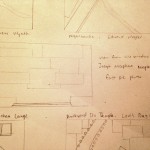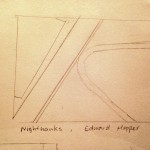Roman holiday is a 1953 Hollywood romantic film which all scenes were shot in Rome. The film is about an escaped princess called Princess Ann, acted by Audrey Hepburn, who rebelled against her royal requirements and privileged life to experience Rome on her own. During her escape, she met a journalist Joe Bradley, a role played by Gregory Peck who supposedly was to interview Princess Ann. The movie ends with her returning to her duty as a princess while keeping the adventurous and romantic memories of Rome with Bradley. The film enjoyed great success with numerous awards won, including Hepburn’s Best Actress in Academy Award, Golden Globe Award, New York Film Critics Circle and BAFTA Award for Best British Actress. Edith Head, the fashion and character designer of the film was also recognized by the industry with Academy Award for Best Costume Design and Black-and-White Award. The film was also picked to be preserved in the United States National Film Registry to document the glory of the 1950s.
William Wyler, the producer and director of Roman Holiday, was known for many other successful movies at the time with his sensational touch on the narration and settings. He is described as a competent, renowned and proficient director who is also known for using ordinary characters for real-life circumstances in his movies. According to his manifestation, Audrey Hepburn landed the role of Princess Ann after his failure to find other actresses he thought fit. Hepburn proved herself worthy of the role after a screen test. Though she had taken part in European movies, this was her first major role in the American movie.[1] Wyler invited Edith Head as the visual guarantor to the romantic story. Head worked closely with Hepburn with the costume design as well as teaching her the transformation in body movement between being the princess and a normal girl[2]. She also suggested the rebellious short hair look which later on set a unique trend in 1950s fashion. Gregory Peck who played the role of Joe in the movie was only granted a star billing for the film. However, later in time, Hepburn was also included after Peck requested Wyler to give her a star billing too. She did an exceptional work for the film made her star winning for it and for other movies later.
In the picture, Hepburn and Peck look relaxed with uplifting smiles on both faces. They are holding hands while Hepburn leans forward her body toward Peck and Peck slowly walking down the Roman stairs. She wears midi over-knee skirt with a white blouse with rolled up sleeves separated by a belt. The belt emphasizes her tiny waist and elongates her legs. And her string sandals in Greek and Roman make the look more relaxed. Together with her short hair, she does not exhibit any sophistication of her role- the royal princess. She is just a young woman who is having fun in the streets of Rome with her casual clothes. On the other hand, Peck is dressed in a comparably more formal suit with a tie just as expected of a journalist’s interviewing look. The suits were not perfectly skimmed to the body during 1953. Peck wore loose fit high waist trousers with his tie tackled into the belt. The jacket is long and covers the hip. And people in the background are seated some standing showing a hassle-free mood around.
According to Head, she was trying to bring a casual and informal look as Hepburn was a princess trying to blend in and it worked. Hepburn was playing the role of a princess disguising herself to appear as a common girl on the streets. Head had to find a costume that brought out this by looking at the trends of Rome at the time as well as the weather.[3] Therefore, form a princess outfit she needed something simple. The sandals deed the magic as well as the rolled-up sleeves on a hot temperature of Rome during summer.
The 1950s are acknowledged for the post-war restoration and gradual growth in prosperity. And the fashion is characterized by femininity and conformity[4]. While war and restrictions were gradually over, ultra-feminine looks with refined, tailored garments that skimmed the body’s contours were expected with the ideology of getting women out of work and back into the home. The New Look, initiated in 1947 by Christian Dior, resonated with the zeitgeist to emphasize femininity that it could make women who wore it at once sexy and desirable and also matronly and maternal.[5] The public perceived the transformation as the psychological need for changing and moving away from boxy silhouette from the 1940s war-time while feminists were concerned about the waistline as an unappreciated and irresponsible attempt to curtail women’s freedom.
Introduction of TV in the living rooms and the engagement in leisure and holiday activities directly boosted the progression of Hollywood and lifestyle needs. Movies were the most common form of storyline entertainment in America with a large number of audiences. Therefore, the movies mostly mirrored the social attitudes of the people or advocates for the mainstream ideology at the time which led the rise of “women’s film”[6] that empowers women’s femininity by not only distinguishing the physical appearance in the film, but also and with narratives of her personality and storyline. For example, Princess Ann is perceived as the center of the story with supporters, admirers, a photographer in pursuit trying to catch sight of her. The plot design enables the star phenomena for the narration[7].
William Wyler had directed several films in the 1950’s. In 1951, he produced and directed Detective Story, Roman Holiday in 1953 and Friendly Persuasion in 1956 respectively. In 1959, he directed the legendary successful box office film Ben-Hur that had won 11 Oscars. Though previously known for drama, Wyler wanted to try comedy and thus directed Roman Holiday. His first choice to play the role of Joe Bradley was Grant who declined the role. He then managed to convince Peck to take the role. Getting a character for Princess Ann was trickier. His first choice was Elizabeth Taylor then Jean Simmons who were both unavailable. He then went searching for a character of which he landed on Audrey Hepburn who had to go through a screen test before being taken. And after the test shot, he had to convince Paramount to allow him to shoot on sight in Italy and then talk Italian officials into allowing them to shoot since the officials thought the film was making fun of common Italians[8].
The 1950s was a period when most people felt free and women could make several decisions, go to work and support their families from their incomes. The film is about a princess feeling pressurized by her obligations and attire that she feels uncomfortable in. She then decided to change this and take matters into her own hands. The same is true for most things at the time as it was a time of massive transition.
Conclusively, the film’s success is attributed to the collaboration between its major contributors. Edith Head’s enhancement in femininity in both fashion and character design, William Wyler’s sensational narration, and Audrey Hepburn’s adaptability in expression and body movement had a synchrony that helped them work together to produce an exceptional movie that was recognized by both public and the industry.
[1] Neil Sinyard. A wonderful heart: the films of William Wyler. Jefferson, North Carolina: McFarland& Company, Inc., 2013. Page 122.
[2] Rebecca Adams. “Edith Head’s Roman Holiday Costumes Made Audrey Hepburn An Instant Star” Huffingtonpost.com. https://www.huffingtonpost.com/2013/10/28/edith-head-roman-holiday_n_4169760.html
[3] Jorgensen, Jay. Edith Head: The Life and Times of Hollywood’s Celebrated Costume Designer. Philadelphia: Running Press; New York: LifeTime Media, 2010. P192-195.
[4] Valerie D Mendes. “1946- 1956 Femininity and Conformity”/ Fashion Since 1900. London: Thames & Hudson,
- Page 126.
[5] Stella Bruzzi. “It will be a Magnificent Obsession: Femininity, Desire and the New Look in 1950s Hollywood Melodrama”. In Fashion in Film, edited by Munich, Adrienne. Bloomington, Indiana: Indiana University Press, 2011. Page 161.
[6] Ibid. 5. Page 163.
[7] Andersson, Therese. “Fashioning the fashion princess: mediation- transformation- stardom” Journal of Aesthetics and Culture. NO.1, Vol.4 (2012): http://www.tandfonline.com/doi/full/10.3402/jac.v4i0.5331?scroll=top&needAccess=true
[8] Neil Sinyard. A wonderful heart: the films of William Wyler. Jefferson, North Carolina: McFarland& Company, Inc., 2013. Page 120.
Bibliography
Adams, Rebecca. “Edith Head’s Roman Holiday Costumes Made Audrey Hepburn An Instant Star” published on Huffingtonpost.com. (Accessed October 29th, 2017). https://www.huffingtonpost.com/2013/10/28/edith-head-roman-holiday_n_4169760.html
Andersson, Therese. “Fashioning the fashion princess: mediation- transformation- stardom” Journal of Aesthetics and Culture. NO.1, Vol.4 (2012): http://www.tandfonline.com/doi/full/10.3402/jac.v4i0.5331?scroll=top&needAccess=true
Bruzzi, Stella. “It will be a magnificent obsession: Femininity, Desire and the New Look in 1950s Hollywood Melodrama”. In Fashion in Film, edited by Munich, Adrienne. Bloomington, Indiana: Indiana University Press, 2011.
Head, Edith. How to Dress for Success. New York: Penguin Random House, 1967.
Jorgensen, Jay. Edith Head: The Life and Times of Hollywood’s Celebrated Costume Designer. Philadelphia: Running Press; New York: LifeTime Media, 2010. P192-195.
Mendes, Valerie D. “1946- 1956 Femininity and Conformity” In Fashion Since 1900. London: Thames & Hudson, 2010.
Sinyard, Neil. A wonderful heart: the films of William Wyler. Jefferson, North Carolina: McFarland& Company, Inc., 2013.
Stutesman, Drake. “Costume Design, or What Is Fashion in Film?” In Fashion in Film, edited by Munich, Adrienne. Bloomington, Indiana: Indiana University Press, 2011.
Wyler, William. William Wyler’s production of Roman Holiday. (Place of publication not identified; publishers not identified), 1952.




